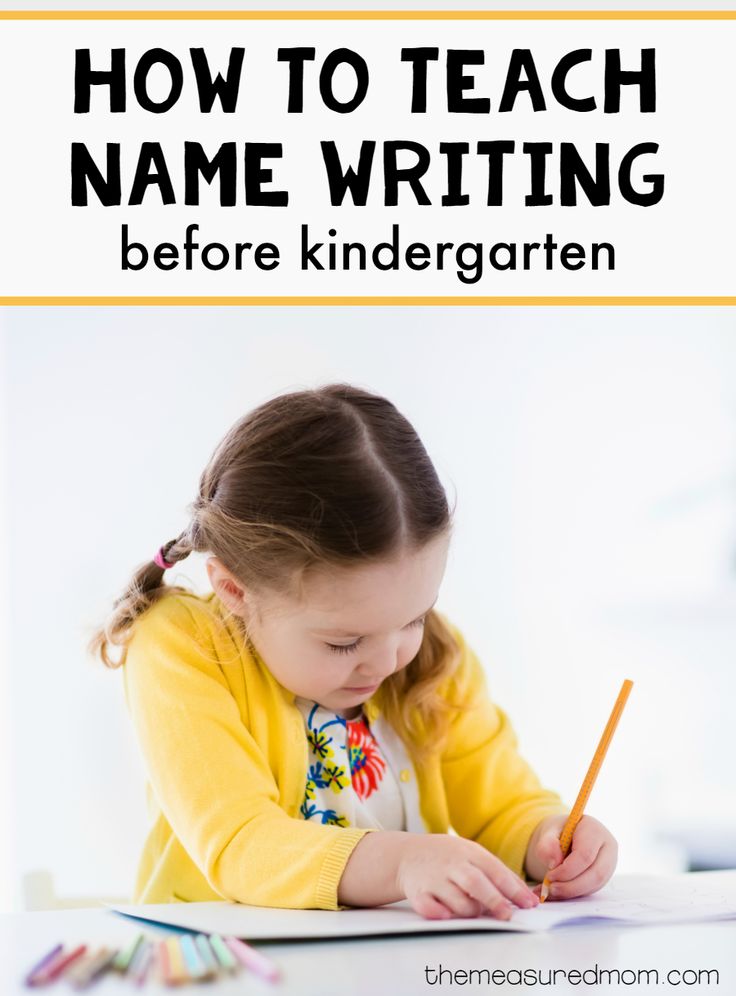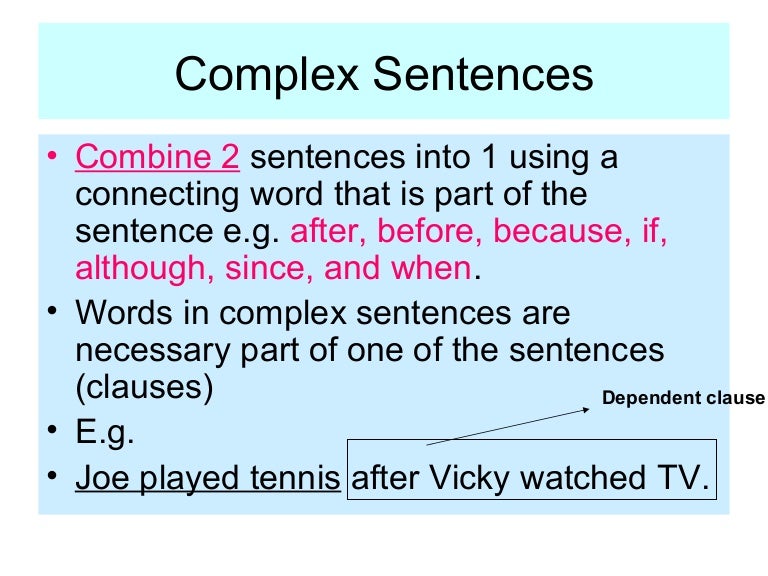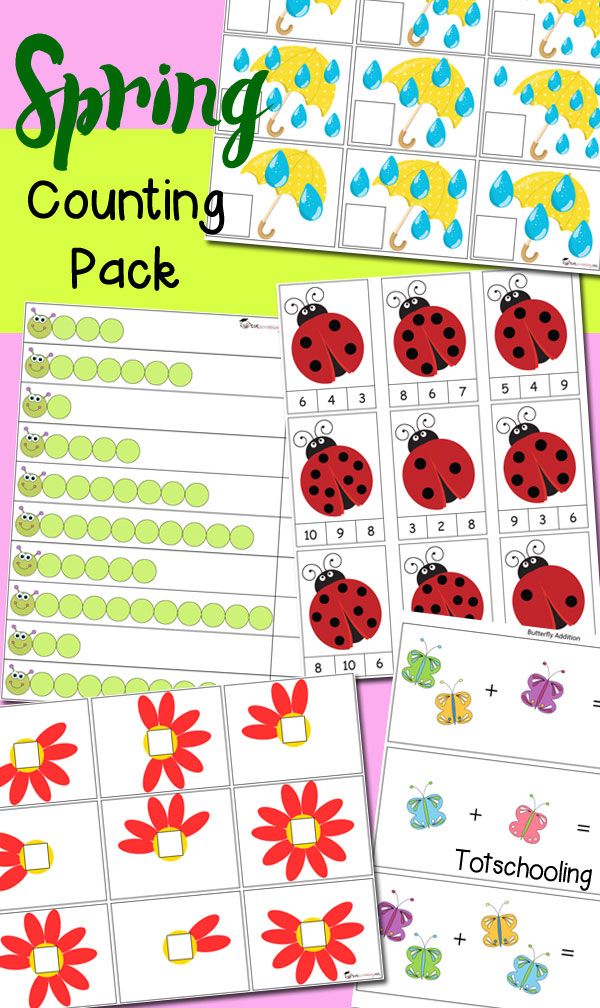Teaching kids to write name
A simple way to practice name writing
PSPKK123June 21, 2016 • 16 Comments
This post contains affiliate links. As an Amazon Associate I earn from qualifying purchases.
Sharing is caring!
Is your child struggling to write his name independently? Try this simple strategy for kids who are close to entering kindergarten but still need some help writing their names.
(This post contains affiliate links.)
This Reading Mama and I have been sharing our top tips for getting little learners ready for kindergarten. So far we’ve talked about interactive read alouds and concepts of print. Today we’ll talk about teaching your child to write his or her name.
Try hands-on activities first!
Before you have your child practice name writing with a pencil, you’ll want to do a lot of hands-on activities to help him recognize and form the letters of his name. You’ll find some quick name activities in this post and even more of our favorite name activities here.
Your child needs to know two things to write his name on paper…
- how to hold a pencil correctly – (try these tips)
- how to spell his name
While it is helpful, it’s not absolutely necessary that your child knows how to form all the letters of the alphabet, or that he knows the distinction between upper and lowercase letters before he writes his name.
However, if your child is close to entering kindergarten, please know that most kindergarten teachers prefer that children enter school writing their names with a capital followed by lowercase letters. In the sample images below, you’ll see capital letters throughout the name… because my little guy has a while until he’s in kindergarten. 🙂
A fun song to help kids learn to spell their names
Before our kids are ready to write, we’ve taught them how to spell their names by singing their names to the tune of “There was a farmer who had a dog.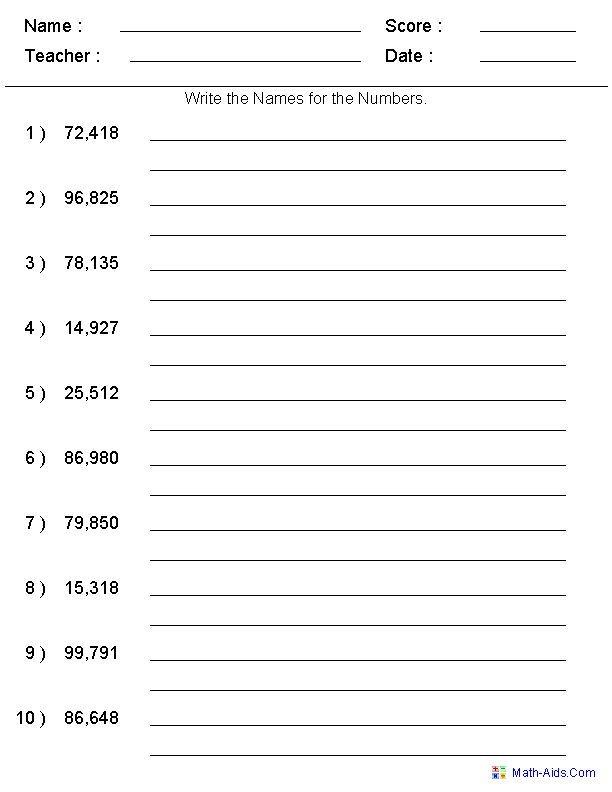 ” Most names – except very long ones – can work with this tune, if you modify it just a bit.
” Most names – except very long ones – can work with this tune, if you modify it just a bit.
An example:
There was a girl who liked to play,
And Emily was her name-o!
E-M, I-L-Y,
E-M, I-L-Y,
E-M-I-L-Y,
And Emily was her name-o!
Try this simple strategy to practice name writing
What if kindergarten is on the horizon and you need a quick way to practice name writing? Your child can make a lot of progress in just a few weeks by trying this simple strategy.
You will need:
- a pad of blank paper or blank paper stapled together
- a pencil or skinny marker
Turn to the first page in the pad of paper. Have your child write his name the best he can, even if it takes up the whole page.
If your child is new at this, hold his hand as he writes, saying the names of the letters as you do so.
Have your child write his name on a new page each day.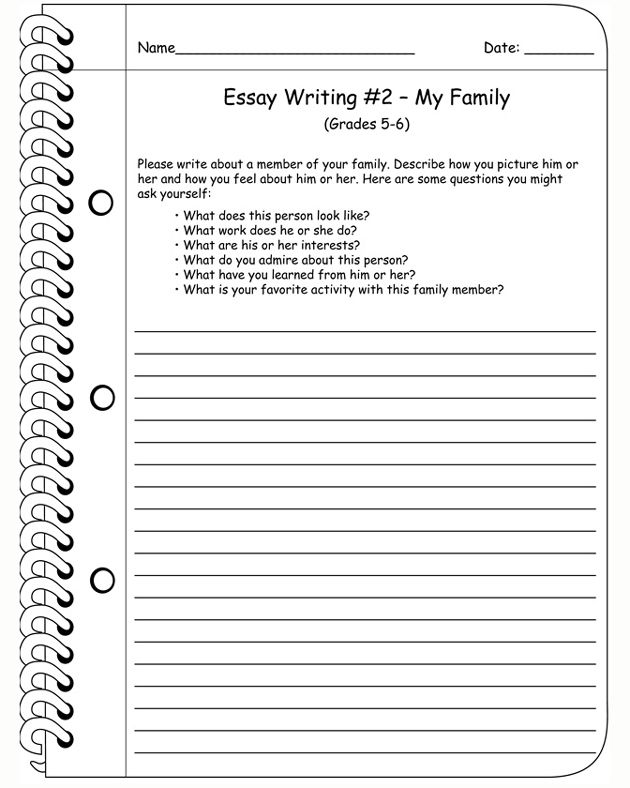 Provide as much support as necessary. You may need to hold your child’s hand for some letters and not for others.
Provide as much support as necessary. You may need to hold your child’s hand for some letters and not for others.
After a month of this, your child may surprise you by writing his name just the right size! At this point, if you’d like, you may introduce writing on a plain line and then – if it doesn’t frustrate your child – basic handwriting lines.
If writing is a struggle for your child, using a marker is a good first step. But do be sure that your child can also write his name with a pencil before starting kindergarten.
Other ideas for name writing:
- Write your child’s name using a highlighter. Have him trace it using a pencil.
- Write your child’s name on a card. Have him copy it by using his finger to “write” his name in a sensory tray of shaving cream, salt, or sugar.
- Play a name fishing game with this free printable.
- Have your child “sign in” to do an activity – whether that’s have to have a snack or enjoy some screen time.

Check out the rest of our kindergarten readiness tips!
CHECK OUT OUR POPULAR ALPHABET CURRICULUM!
Letter of the Week Curriculum
$29.00
Looking for a creative, hands-on letter of the week curriculum? Download this ebook and have countless hands-on, creative learning activities right at your fingertips.
Buy Now
MEMBERS GET MORE!
WATCH THE MEMBER WORKSHOP
In this 25-minute training, members will learn:
- How to teach preschoolers to make their own books
- How to determine each learner’s level of spelling development
- What skills to teach
- Exactly what to say when supporting preschool writers
Not a member yet? Learn more here.
CLICK TO WATCH THE MEMBER TRAINING
Free Spelling Games
Get this fun variety of sample spelling games from the membership site! The download includes resources for spelling CVCE words, long vowel teams, and multi-syllable words.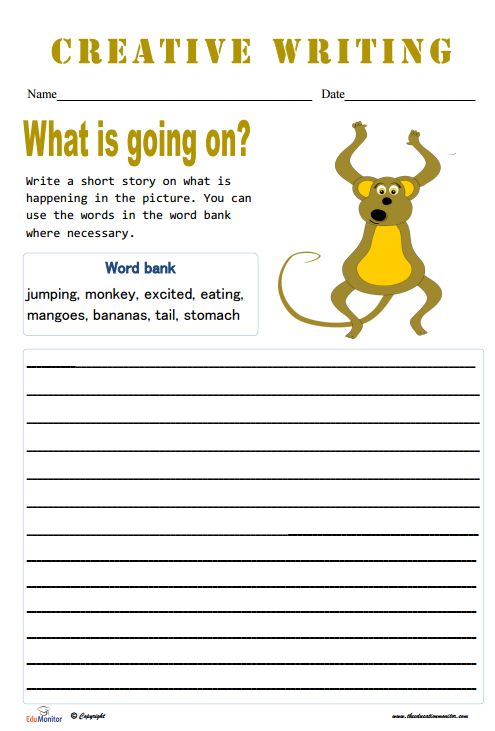
Sharing is caring!
Filed Under: Writing in Pre-K, Writing Tagged With: kindergarten, Pre-K
You May Also Enjoy These Posts:
Digraph say & cover
Teach fluency with scooping phrases
Trackbacks
How to Teach a Child to Write Their Name: Simple Steps
- Share
If you want to learn how to teach a child to write their name for the first time, it can be tempting to whip out a piece of paper and start tracing letters.
If your child is still in preschool, she needs to develop important pre-writing skills before moving onto pen and paper.
Read on to find out how you can go about preparing your child and eventually teaching her how to confidently and correctly write her name.
When Should a Child be Able to Write Their Name?
Firstly, you may be wondering if your 3 or 4-year-old should be able to write their name or why you are practising so often and your child is still not properly writing it.
It’s important to understand that children first start randomly forming and experimenting with letters as part of the developmental stages of drawing.
Scribbles and lines turn into loops and spirals and then shapes.
At some point, between 2 and 4, shapes that vaguely resemble letters start to emerge (like the capital letter T or V). These are not yet necessarily formed on purpose.
At around the age of 4, your child will probably start to “write” on his drawings, which means he is experimenting with forming letters he sees often – in his environment, his name written on his artwork, etc.
He may proudly announce that he is writing. Your child is probably more exposed to his name than any other word if it’s written on his belongings, his artwork and especially if a parent is trying to practise it often.
The simple answer is don’t worry about it. There is no age that your child must know how to write his name. It will probably start emerging around 4 years, maybe a little earlier or later.
If your child is too young developmentally to be expected to write, then the same applies to his name.
While it is inappropriate to start teaching and expecting your child to write, it is understandable that you may want to practise just his name.
There are ways to do this that are fun and developmentally appropriate and that will not cause stress or worse, boredom!
Should Children Write their Names with Capital Letters
It is easier for a young child to learn their name in capital letters first, as these are made up of simpler lines and curves.
Your child will also experience more success when actually being able to form the capital letters.
While many still believe in only capitalizing the first letter, this article on teaching capital letters first is an excellent explanation of why it’s best not to introduce a young child to lowercase letters.
The occupational therapist states:
“No matter how excellent the instruction, not all five-year-olds have the underlying spatial-temporal perceptions or visual motor skills to support learning lowercase.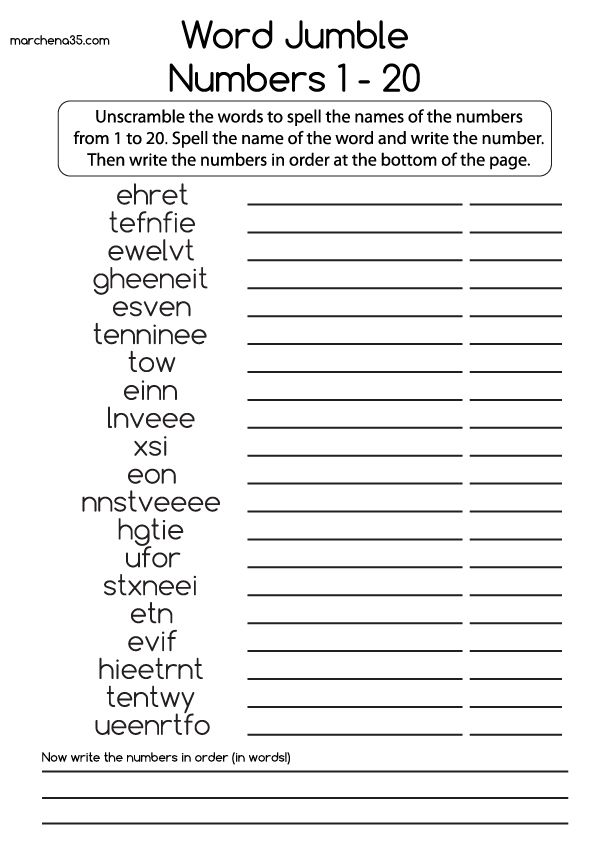 ”
”
When a child learns to form the letters incorrectly, it becomes more difficult later on to form the letters properly.
Here is a common example of how children write a letter ‘a’ when they don’t have fine motor control yet, or they have not been taught the correct formation.
They tend to draw a circle and then attach a line or stroke onto the side. This will not be an easy habit to undo.
Here is an example of how to teach an older child the correct formation. Start at the top, go around to the left, all the way back up, then straight down.
This particular font has a flick at the bottom. Some schools use a font similar to this, or one where the ‘a’ has a straight line without a flick.
This does not matter too much. It is more important to focus on the correct direction and to not lift the pencil to form the line going down.
How Do You Teach a Child to Write Their Name?
Writing is a process of developing many skills, and the very last step in that process is writing letters on a piece of paper with a pencil or pen.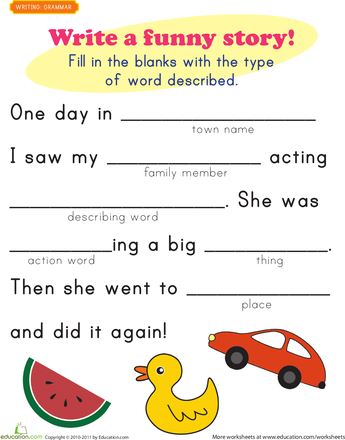
Children begin writing by the first grade because by then they have developed the necessary fine motor control to write correctly and control their pencil.
For preschool children, the first step in the puzzle is to develop their fine and gross motor skills, and later to start learning to write their names by being introduced to letters in many different informal ways.
Put away the worksheets, boring traceables, online apps and any other activity that isn’t play-based.
There’s a reason children are wired to play for the first few years of their life. It’s how they learn. Everything else is a waste of time.
Here is a quick breakdown of the steps involved in teaching your child to write their name.
1.
Develop General Fine and Gross Motor SkillsIn order for children to be able to write – a skill that requires fine motor control – they need to first develop their gross motor skills.
Think of this as starting large and going smaller over time.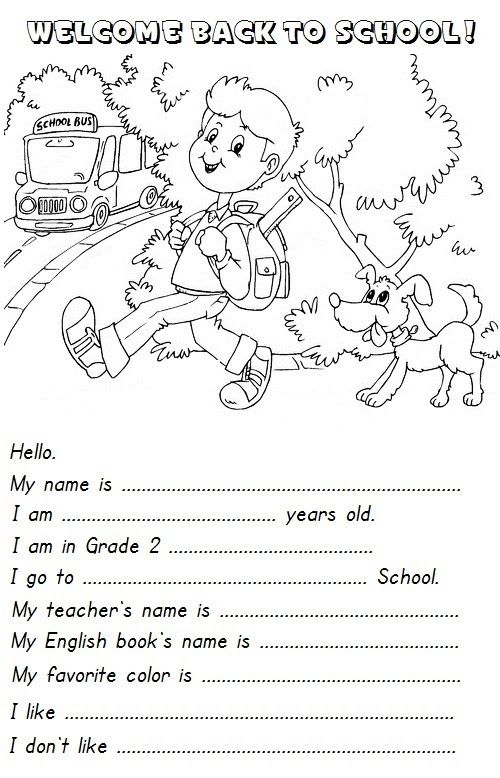
Gross motor skills can be built through everyday movement and play activities.
Children should experience movements such as climbing, running, swinging, jumping, skipping and playing with balls.
They will naturally develop these muscles during free play and you can also play games with your children to specifically work on these skills.
Children develop their gross motor skills first and later their small muscles strengthen.
Fine motor activities include drawing, painting, playing with beads, using pegboards, threading, lacing, etc.
These are all vitally important as children must have good muscle control before they can hold a pencil and write.
Start with these fine motor skills toys you probably already have at home.
2. Let Your Child See Their Name Often
An important step in learning to write a name is name recognition.
A child who sees her name often will start to understand what it represents, imprint it in her memory, and have greater success when attempting to write it.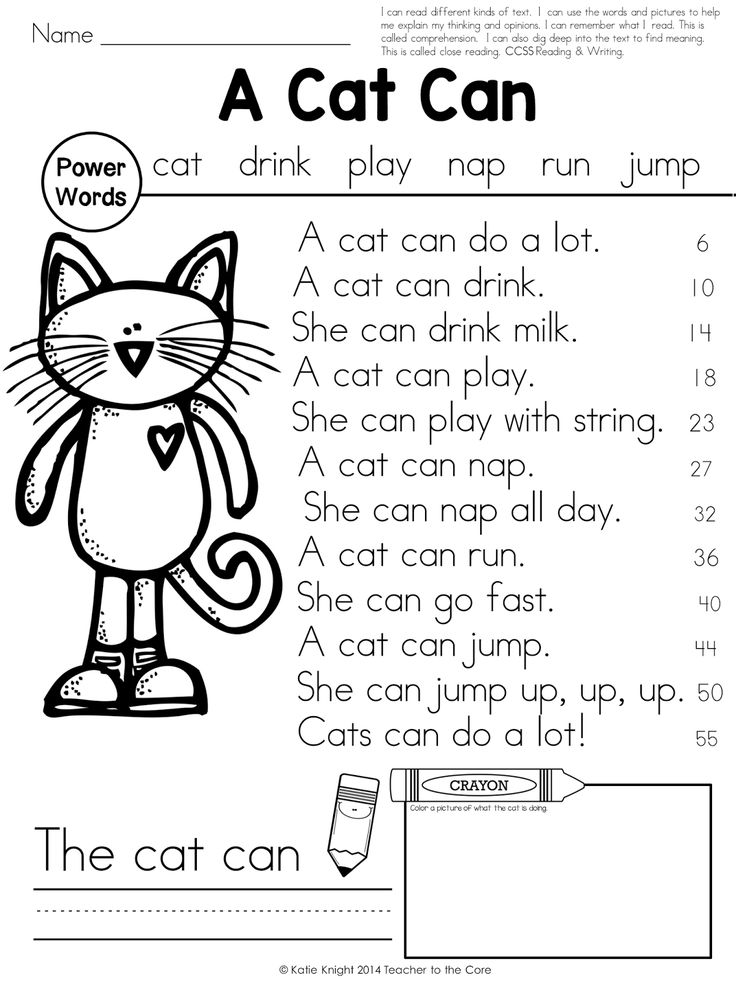
Write your child’s name on the top left-hand corner of her pictures. This also teaches how we write from left to right and top to bottom in English.
Label her belongings, her bedroom door if possible and any other places that are appropriate.
To help you teach the letters, print your child’s full name out in big on a piece of paper or banner and keep it visible during all the following activities.
3.
Walk the LettersUsing chalk, draw one letter at a time of your child’s name in huge letters on concrete or paving. The letters should be big enough for your child to walk around them.
Practise correct formation by starting in the correct place and moving along the letter in the correct sequence. Use language to explain the formation.
Let’s start here. Walk all the way up. Turn around and go down all the way to the bottom.
4.
Use Messy PlayMessy play is the best way to teach name recognition and writing. Focus most of your attention on these kinds of activities.
Focus most of your attention on these kinds of activities.
Try to use all the senses if possible – touch, sound, smell, taste and sight. When more senses are incorporated, the concepts are learned quicker and associations are made.
This post contains affiliate links for educational products that I personally recommend. If you purchase through one of them, I earn a commission at no extra cost to you. Read the terms and conditions for more details.
The messier the activity is, the more likely your child will remember the letters they were playing with and their shapes.
- Use a large paintbrush dipped in water to trace over medium-sized letters drawn in chalk on the paving.
- Form letters in shaving cream.
- Form letters in a tray of sand or in the sandpit.
- Bake letter cookies.
- Say the letter sounds out loud as you form them (not the name ‘bee’ but the sound ‘b’).
- Write the letters on big pieces of sandpaper and get your child to trace them.
 Feeling the rough texture is an excellent way to imprint the formation in your child’s mind.
Feeling the rough texture is an excellent way to imprint the formation in your child’s mind. - Use finger paint to trace over letters on large paper.
- Using playdough, build each letter in the name. Try making something that starts with that sound.
5.
Play with LettersLet your child play with plastic, foam, rubber or wooden letters.
Feel the letters and trace them with your fingers. Build your name with the letters. Say the sound of each letter.
Fridge magnets are a great way to play with and feel letter shapes.
6. Do
Pre-Writing ExercisesMaking lines and patterns is a great way to introduce the shapes and formations found in letters. Try these pre-writing exercises too.
7.
Start Tracing LettersWhen your child is older (and ready) and you have practised letters in multiple ways, they can start tracing big letters on paper.
- Print each letter onto an A4 paper.
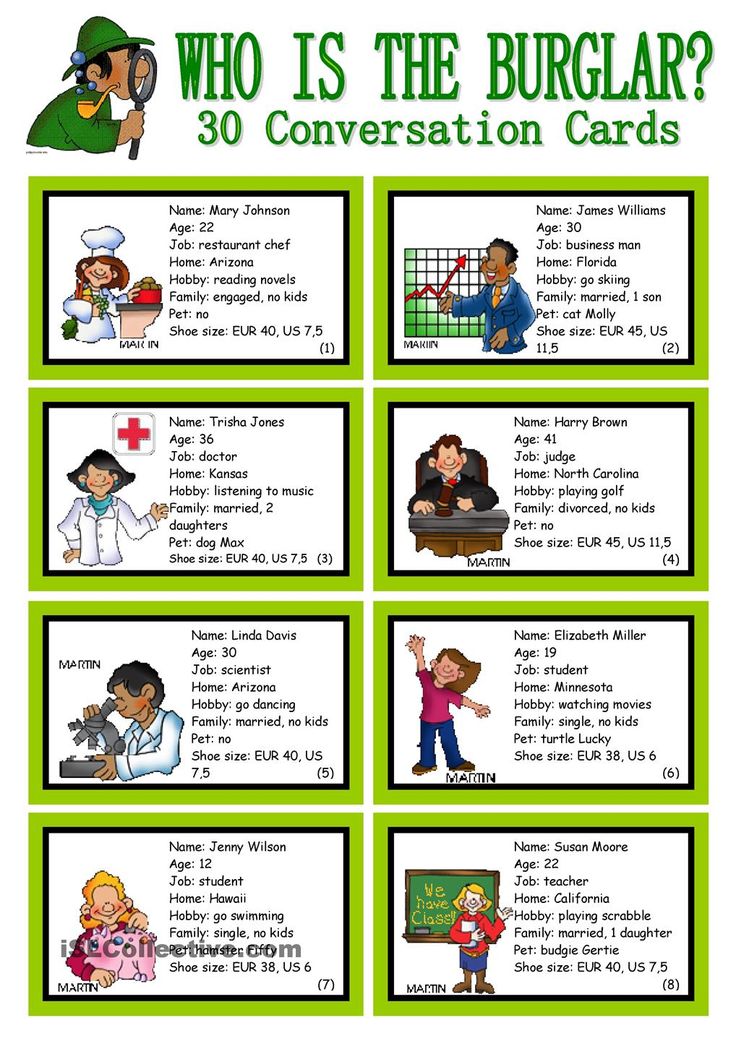
- Get your child to trace over each letter with their finger.
- Ask them to trace that letter onto your back.
- Then take coloured wax crayons and trace the letters a few times.
Over time, you can start to decrease the size of the letters. Print your child’s name in grey letters or dotted letters and ask them to trace the letters in pencil.
Later, write their name softly on their work and get them to trace over it, until they are writing it independently, using the correct formation.
If your child experiments with writing their name before the process is complete, don’t stop them. Allow them to experiment with writing freely.
Remember to have fun and let your child progress through the steps at her own pace.
Get FREE access to Printable Puzzles, Stories, Activity Packs and more!
Join Empowered Parents + and you’ll receive a downloadable set of printable puzzles, games and short stories, as well as the Learning Through Play Activity Pack which includes an entire year of activities for 3 to 6-year-olds.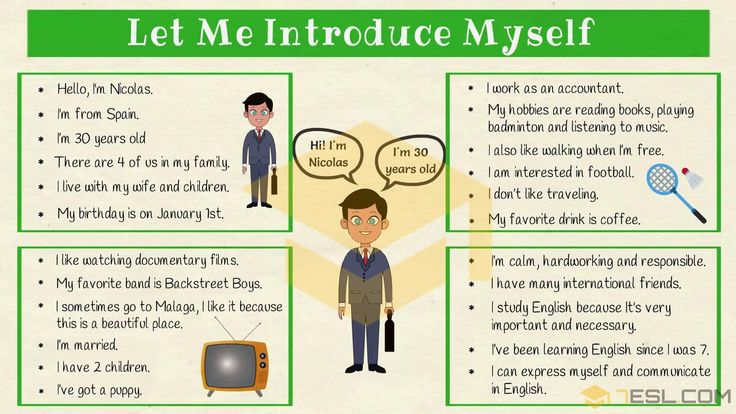
Access is free forever.
Signing up for a free Grow account is fast and easy and will allow you to bookmark articles to read later, on this website as well as many websites worldwide that use Grow.
- Share
🎖▷ Why you don't have to worry about weight gain with Lamictal
psychology
2 minutes read
If you're worried that taking Lamictal (lamotrigine) might cause weight gain, there's good news. It probably won't affect your weight much. If anything, you're more likely to lose weight due to Lamictal than gain weight, but either way, the changes are likely to be pretty small.
The effect of Lamictal on weight has been little studied and various clinical trials have found minimal effect. In fact, some researchers even considered the drug as a possible remedy for obesity and as a remedy for overeating. This information should be reassuring for people with bipolar disorder, as many of the medications used to treat this condition can cause weight gain.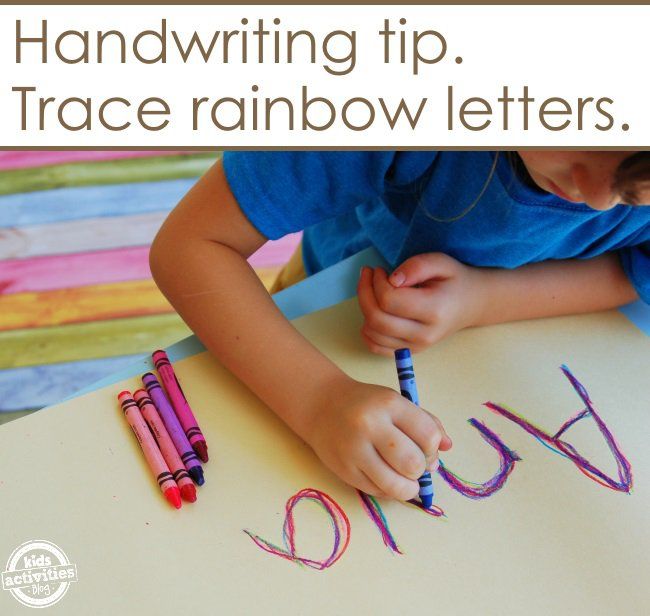
Lamictal findings and weight gain or loss
Lamictal is an anticonvulsant that can be used to treat seizures such as epilepsy. It is also used as a mood stabilizer for bipolar disorder.
In the first clinical trials with the drug, 5 percent of adults with epilepsy lost weight while taking Lamictal, while 1 to 5 percent of patients with bipolar I disorder gained weight while taking the drug. The researchers do not disclose how much weight patients have gained or lost.
Meanwhile, a 2006 study comparing the effects on weight of Lamictal, lithium, and placebo found that some Lamictal-treated patients gained weight, some lost weight, and most remained about the same weight. Weight changes are usually not many pounds anyway. Obese patients taking Lamictal lost an average of four pounds, while the weight of non-obese patients remained virtually unchanged.
Relationship between weight gain and other bipolar drugs
Weight gain from medications used to treat bipolar disorder is unfortunately quite common.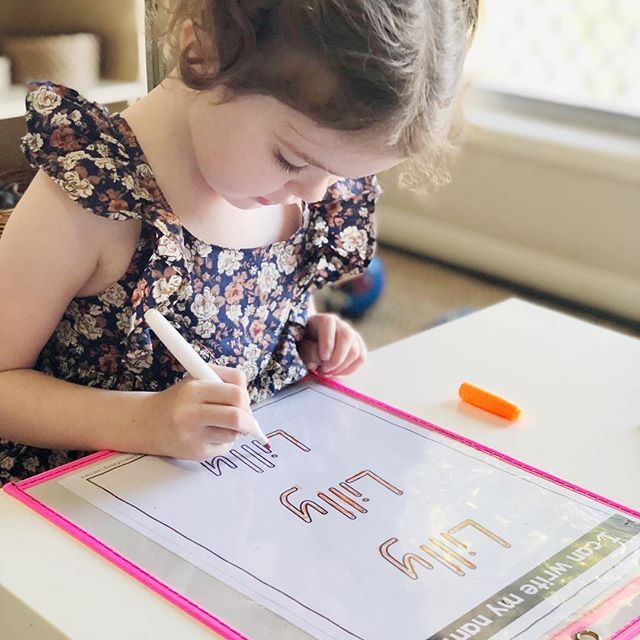 Some mood stabilizers commonly used for bipolar disorder, especially lithium and Depakote (valproate), carry a high risk of weight gain.
Some mood stabilizers commonly used for bipolar disorder, especially lithium and Depakote (valproate), carry a high risk of weight gain.
In addition, the atypical antipsychotics Clozaril (clozapine) and Zyprexa (olanzapine) tend to cause significant weight gain in people who take them. Finally, some antidepressants, notably Paxil (paroxetine) and Remeron (mirtazapine), have been associated with weight gain.
Therefore, if you are already overweight, you and your psychiatrist may want to consider additional weight gain when determining your bipolar medication regimen. Based on this, Lamictal may be a good choice.
Lamictal as a possible treatment for obesity
Lamictal has also been studied as a possible treatment for obesity in people without epilepsy or bipolar disorder.
In a small clinical study of 40 people conducted in 2006, researchers randomly assigned participants to receive either lamiktal or placebo for up to 26 weeks. Each participant in the study had a body mass index (BMI) between 30 and 40, placing them in the obese group to the level of severe obesity.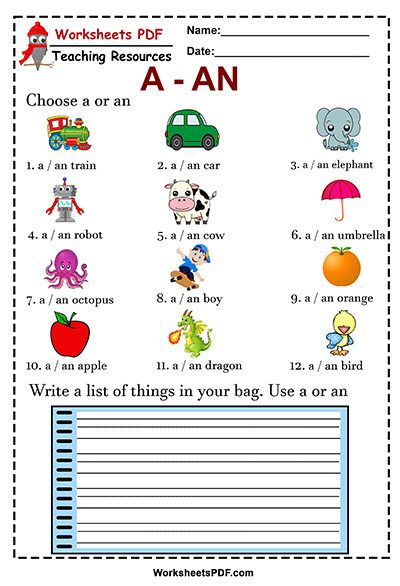 Those who took Lamictal lost an average of just over 10 pounds. Those who took the placebo lost about 7 pounds in the meantime, so while those who took Lamictal lost more weight, they didn't lose all that much more.
Those who took Lamictal lost an average of just over 10 pounds. Those who took the placebo lost about 7 pounds in the meantime, so while those who took Lamictal lost more weight, they didn't lose all that much more.
Another study in 2009 looked at Lamictal as a remedy for overeating. This study involved 51 people with the condition that 26 of them received Lamictal, and 25 - placebo.
Those who took Lamictal lost more weight than those who took placebo (about 2.5 pounds vs. about one third of a pound) and did have significant improvements in blood sugar and cholesterol lab test results. However, Lamictal did not appear to affect other aspects of the eating disorder when compared to placebo.
Tags
Lamictal you don't need to worry about why the increase
Back to top button
Prescriptions are not scary. How to teach children to write through a fun game
Many children before school willingly write in large block letters, sometimes they skip letters, sometimes they write some of the letters in a mirror image, but at the same time they like to write! But now they go to school, and the prescriptions become a nightmare. Why? And how to change it? By Zhenya Katz.
Why? And how to change it? By Zhenya Katz.
Different countries have different attitudes about whether it is necessary to write letters without a break, whether copybooks and calligraphy are needed, and if so, from what age. In England and the United States, children write more in single block letters. In France, prescriptions are written, and they insist on it. In China, they start learning hieroglyphs early.
Many psychologists and physiologists agree that it is not useful for all children to write letters without interruption, and they recommend writing separate letters without trying to write everything together.
What's the problem with capital letters? Is it possible to learn to write beautifully by hand calmly and without tears? At what age is it better to start? How often do I return to copybook assignments? Is it possible to learn to write beautifully if bad handwriting has already formed? The answers to these questions are of great interest to parents and teachers.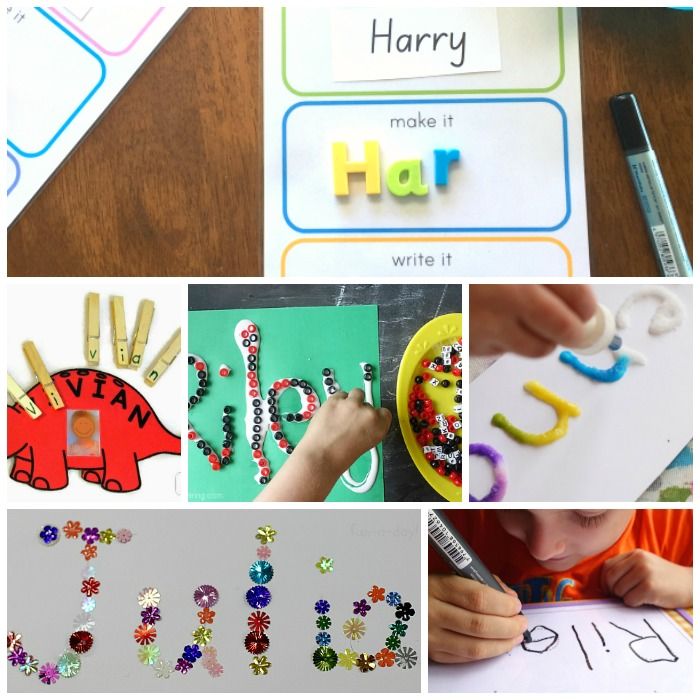
Let's start with the fact that all children are different, and the difficulties in mastering writing are also different. Depending on the situation, it is necessary to choose suitable games and solution methods. What are the most common writing difficulties?
Weak hand, weak fine motor skills, the child quickly gets tired of holding a pencil and putting pressure on it
In such a situation, it is important to offer feasible written tasks - and select convenient written materials. Sometimes parents, seeing the difficulties, decide that they just need to postpone all activities related to pencils until the child himself wants to.
As a result, we meet a child about whom the parents say: “You know, he is 6 years old, but he has not yet chosen which hand to write with, and as a result, he writes neither right nor left.” This is also not very true. Let him write and draw at least a little, let him write with different materials, but you should not completely put off these exercises.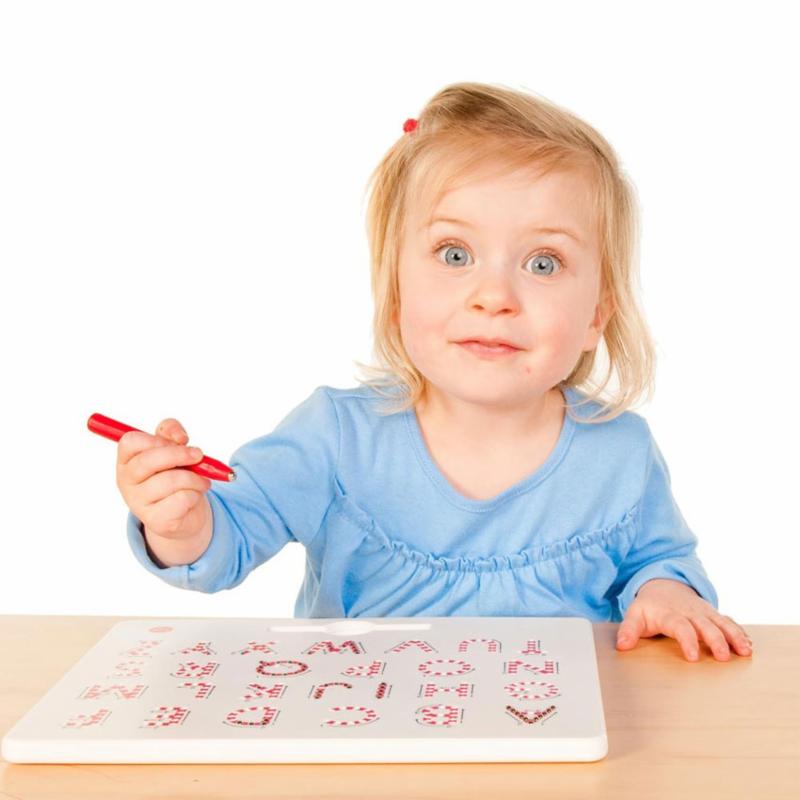
It is unlikely that a child who is not used to drawing at all will suddenly learn to write beautiful sticks and letters just because he gets older and goes to school
In our group there are often children with weak motor skills who find it difficult to hold a pencil. We keep thick triangular pencils 4B or at least 2B especially for them. You can write with soft felt-tip pens, brushes, wax crayons.
Some teachers in this situation give a thin hard pencil, they say, let them work hard so that the line can be seen. This often leads to the fact that children strain even more, squeezing the pencil, and get tired much faster. We advise, on the contrary, to give such materials with which it is easy and pleasant to draw, and the result was immediately visible.
Many children like to write with chalk on asphalt, write with berry juice on large sheets, play with semolina or foam and write letters on them.
For children whose hand gets tired quickly from writing, it is important to gradually increase the load. The more tired they are, the worse they hold the pencil. On the other hand, if a child does not like and cannot write at 4-5 years old, and cannot write his name, then sometimes parents think that you just have to wait - it will get better by itself. And then - bang - and the first class, and immediately you have to write a lot by hand, and in all subjects - in Russian, in mathematics, and then more homework! Parents suddenly catch on, start insisting on beautiful handwriting, children get upset, refuse, get angry. This is not the most pleasant scenario for everyone, frankly.
The more tired they are, the worse they hold the pencil. On the other hand, if a child does not like and cannot write at 4-5 years old, and cannot write his name, then sometimes parents think that you just have to wait - it will get better by itself. And then - bang - and the first class, and immediately you have to write a lot by hand, and in all subjects - in Russian, in mathematics, and then more homework! Parents suddenly catch on, start insisting on beautiful handwriting, children get upset, refuse, get angry. This is not the most pleasant scenario for everyone, frankly.
We usually start by asking at 4-5 years old to sign the name on the pictures, then the name and title, then we call the child to help us write a shopping list, a guest list, a pie recipe. We play drawing, where any funny squiggle is good. We come up with a variety of games with letters, gradually adding different written versions of word games.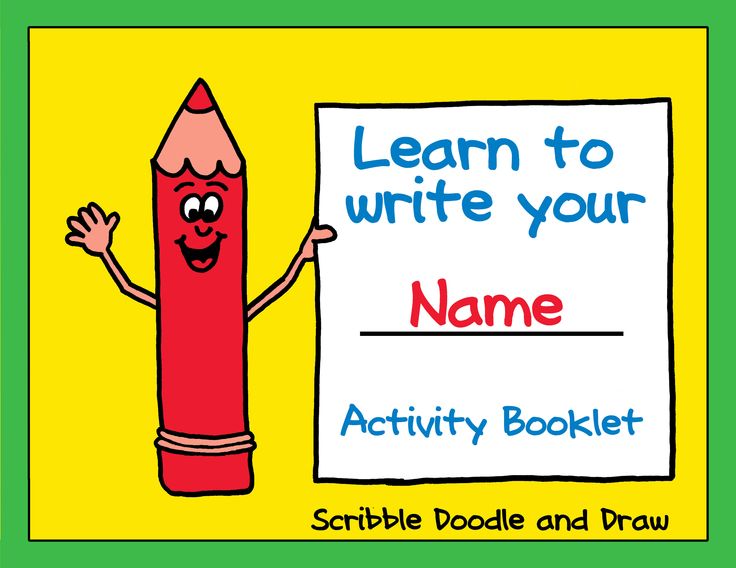
It is difficult for a child to write in small letters
If we see that the child cannot draw a straight line, it does not work out or carefully paint over, circles do not work, the line trembles - we must start with very large samples. Do not try to write small letters, squeezing them into narrow rulers.
Do the opposite: take a huge piece of paper and write a letter on it. You can take an A4 sheet and put it in a transparent file folder, or laminate sheets with large letters - one letter per whole sheet. And then we write in transparent with a marker for the board.
In this case, we fix the motor image of the letter, but at the same time we do not run into problems with fine motor skills. You can write giant letters with a stick on the sand, with a sponge on the bathroom wall, or with chalk on the asphalt. Which, in my experience, does not help much - shading and playing with small Lego.
Parents are often surprised: they say, how bad motor skills can be, he plays Lego for hours!
Alas.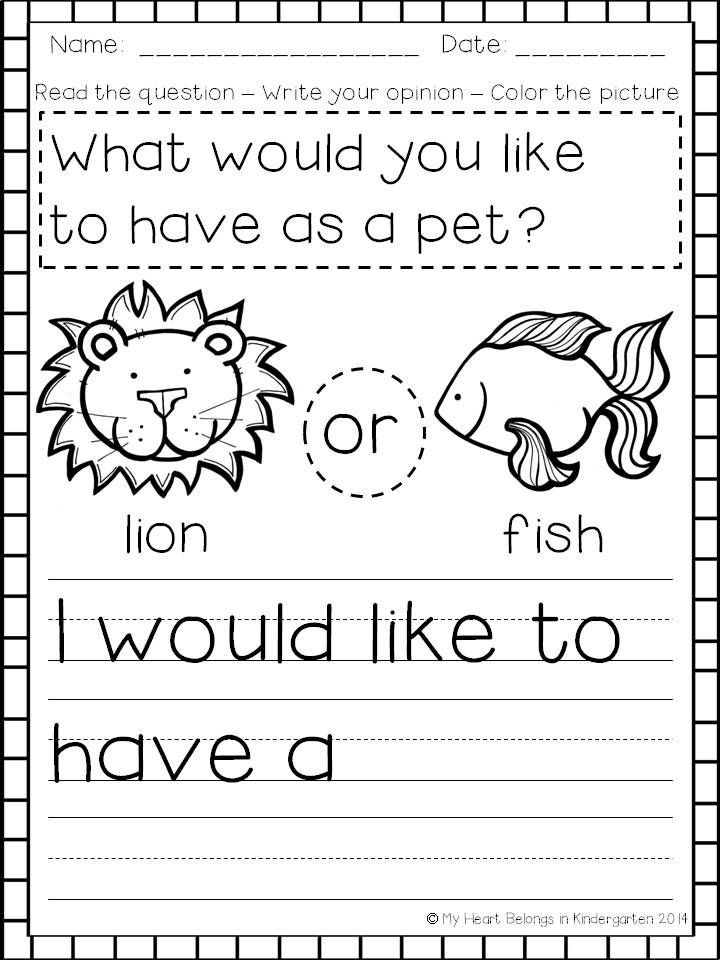 Lego requires completely different movements, not the same as for writing. And the ability to connect cubes and bricks does not help in any way the smooth coordinated movements that are needed for capital letters.
Lego requires completely different movements, not the same as for writing. And the ability to connect cubes and bricks does not help in any way the smooth coordinated movements that are needed for capital letters.
My friend, mother of nine children Olesya Likhunova, told how she taught all her children to write: they did not start with letters, but with a variety of games with clay and plasticine, so that the child had good motor skills, an eye, and good coordination eye-hand. After that, they took a large sheet and drew one letter on the whole sheet. One huge! First, the mother draws, and the child traces this letter with his finger. Then he tries to write with a felt-tip pen. And the most beautiful of the five attempts is shown to all households and boasted: “Look, what our Petya is like! No one taught him capital letters, and today he wrote such a beautiful “A”!”
Ideally, to make a notebook from wide rulers for first-graders who find it difficult to write small letters.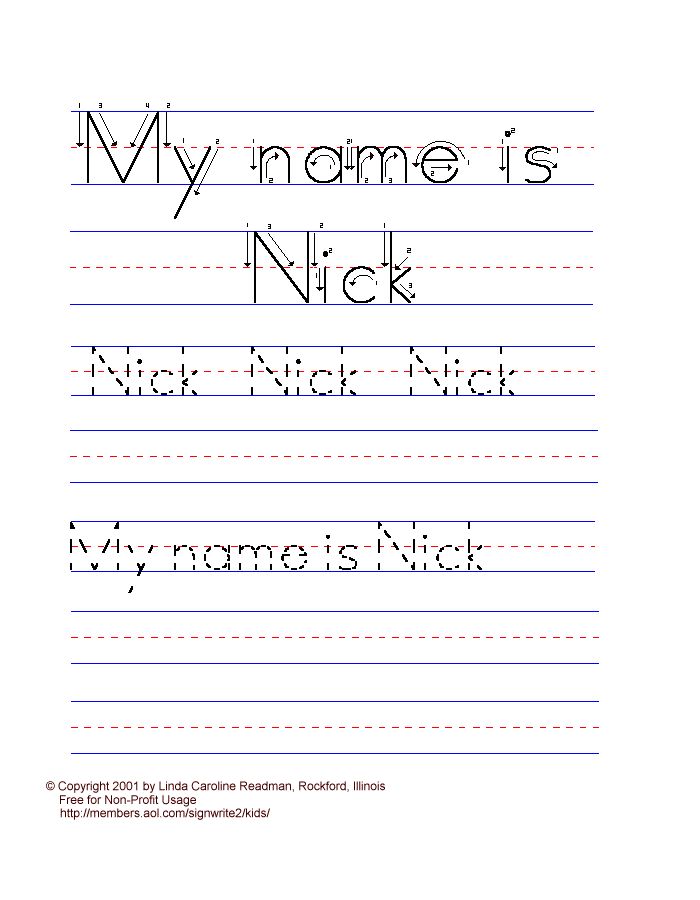 You can give a teacher who will conduct classes with first-graders a stack of paper with large rulers. If we want the child to form an image of a letter, then it is useful to write each letter in a variety of ways:
You can give a teacher who will conduct classes with first-graders a stack of paper with large rulers. If we want the child to form an image of a letter, then it is useful to write each letter in a variety of ways:
- with your hand in the air
- sponge on bathroom wall
- chalk on asphalt
- sand or pavement sprinkler
- colored water on snow
- tassel on large sheet
- with a finger or the whole palm - on clay, semolina, sand or shaving foam.
It is useful to lay out letters from sticks, from plasticine sausages, from shoelaces, from nuts and designer parts.
Outlining letters along dotted lines is not so useful, but drawing a family of similar baby letters around a sample letter is good and useful.
You can also make letters-matryoshkas of different sizes, one inside the other, or draw letters on a hill and under a hill, drawing a sheet diagonally.
The child can write letters, but they turn out “incorrect”
It happens that the image of a letter in a child is not formed very accurately, and he does not understand how wide, how high it is necessary to write a letter to make it look beautiful. Or he simply doesn’t remember which way the tail of B or D is, or confuses the written letters H and C. In this case, it is useful to draw the same letter with chalk, lay it out from counting sticks, from a handful of rice or beans, from plasticine sausages. It is important to use different materials so that you can easily change the proportions of the letter and see if it gets better. You can draw a line on which we draw letters, not straight, but curved so that "the letters go over the mountains", and then it's not scary that one letter leans to the right, the other is bent - it's even funnier. In general, the more play and laughter there will be in your classes, the better!
The child is distracted and confuses the letters
My brother in the first grade wrote “the first of December” instead of “February” because he mixed up the letters and did not like writing. And he wrote this ill-fated "Devra" all month long, both in class and at homework. In such a situation, different attention games work well: for example, find all the written letters "d" among the written letters "c", "f" and "b".
You can do small tasks every day like a correction test - for attention and accuracy. You can compose funny phrases in which all the words begin with this letter: "The purple lantern snorted at the violets." "A good melon perforated the oak."
Child forgets how letters are spelled and what they look like
Some children have difficulty reading and writing because they cannot remember what letters look like. Adults are used to the fact that this icon denotes this sound. And for children, all these icons are often too similar. In this case, we need alphabets in pictures. This is called "forming an association with the image of a letter." We advise you to take the "ABC" by Daria Gerasimova, there in the book "ABC with transformations" each letter has its own image, and there is a rhyme to it.
You can collect the letter A from watermelon seeds or orange rings, O - from cucumber rings, P - from sticks, W - from cones, F - from dates or pistachios, K - from chestnuts, etc. Then the image of the letter will be associated with the material.
You can remember and write down different words that begin with this letter. We draw the letter "A" and around it we write down and draw different words that begin with this letter: bus, arch, acrobat, orange, watermelon. Then we draw the letter "B" - and a squirrel, a ram, a banana, a drum, a bun appear around it.
What do children like to write about?
According to my observations, children most willingly write their name, their compositions, fairy tales, homemade books, tips for finding treasures, inscriptions on their maps, price tags when playing shop, tickets when playing theater, their order when playing games. Cafe. Many children are ready to write their own name at least ten times in a row, and at the same time they are ready to experiment, write letters of different sizes, decorate letters with curlicues, write each letter in a new color, master written letters (not all letters, but only their own name), write wide letters or narrow, high or low.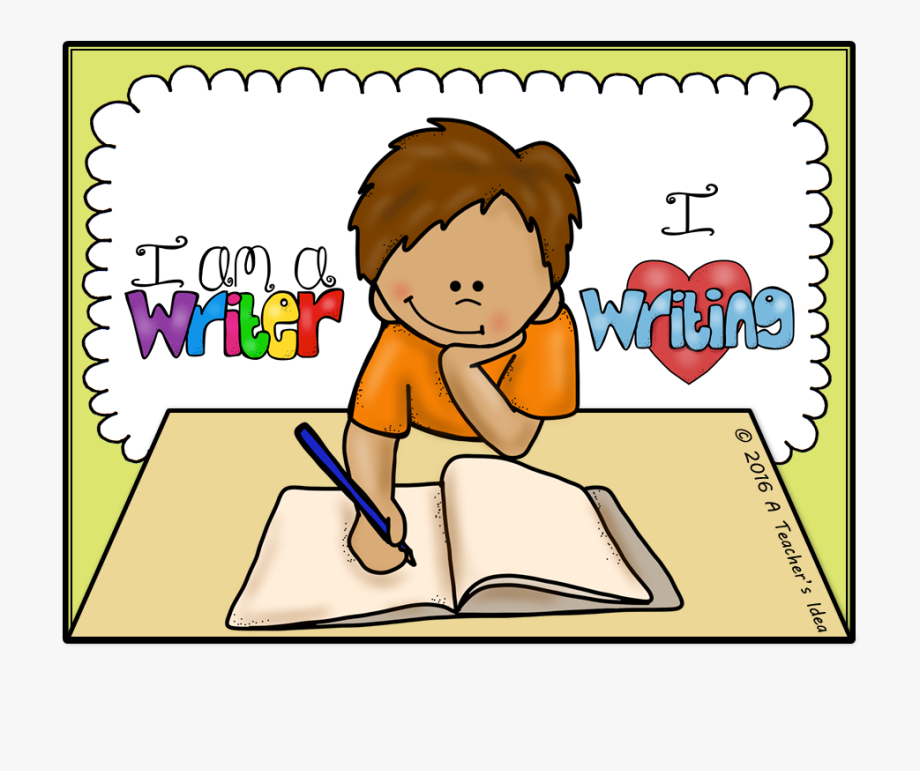
You can add an element of randomness to the games with prescriptions. We throw a dice, and how many points fell out, so many times we draw the selected letter or the selected short word. When the work is divided into small observable pieces, it is much easier to do it, and it is not so scary to start. Perhaps at some point the child will see that there is not much left - and he will simply add letters to the end of the line himself.
If we are only teaching a child to write, it is important to separate literate writing and writing
It is very difficult to learn everything at once, to have time to follow the spelling, the meaning, the beauty of the letters. And therefore, it is most reasonable to separate these aspects of learning. And in any case, there is no need to rush a child who is having a hard time.
Let's say that in the exercise we are focusing on writing correctly. Then we start by choosing those words that most children can write without errors. Let there be no unchecked vowels, and even unstressed ones. And let it be clear whether the letter is voiced or voiceless at the end. It is not necessary to write off, you can choose pictures - and write captions to them. House, cat, whale, bow, beetle, lamp, table, chair, fox, wolf, hand, porridge, sofa, robot, arch, forest, park, Christmas tree - it's hard to make a mistake in these words. We print pictures - without words, and ask the child to choose any 5 cards and write captions for them! And we can, with a clear conscience, praise everyone who wrote so many words correctly. And then you can come up with funny combinations with these words: “the house flies”, “blue cat”, “red whale”, “fun bow” - and write them off too. Or you can attach separate cards with adjectives to the words that we already know how to write - and write down the funniest. For this, by the way, cards from the game "triple nonsense" are great. Or you can flip through the pages of a paper cutter and write down the resulting nonsense.
Let there be no unchecked vowels, and even unstressed ones. And let it be clear whether the letter is voiced or voiceless at the end. It is not necessary to write off, you can choose pictures - and write captions to them. House, cat, whale, bow, beetle, lamp, table, chair, fox, wolf, hand, porridge, sofa, robot, arch, forest, park, Christmas tree - it's hard to make a mistake in these words. We print pictures - without words, and ask the child to choose any 5 cards and write captions for them! And we can, with a clear conscience, praise everyone who wrote so many words correctly. And then you can come up with funny combinations with these words: “the house flies”, “blue cat”, “red whale”, “fun bow” - and write them off too. Or you can attach separate cards with adjectives to the words that we already know how to write - and write down the funniest. For this, by the way, cards from the game "triple nonsense" are great. Or you can flip through the pages of a paper cutter and write down the resulting nonsense.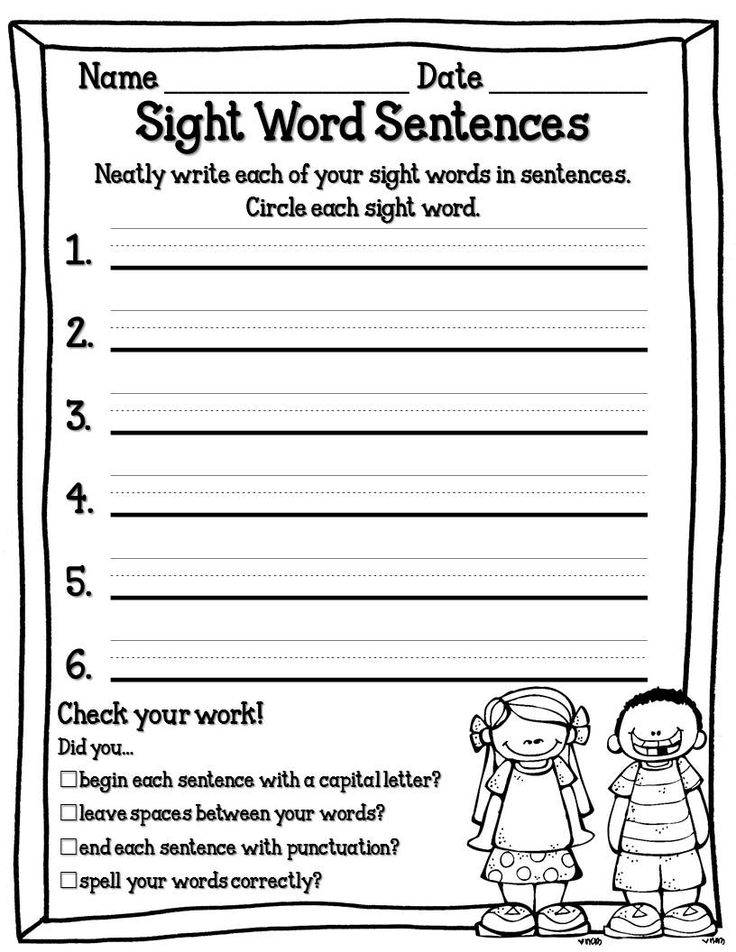 If we want to teach children to compose, to write meaningful texts, at this moment we must put aside both literacy and the beauty of letters. Let him write at random, skipping letters, making mistakes, erasing and crossing out, as long as the ideas in the text are interesting and the plot is fascinating. As one teacher friend says, let them write an essay with a million mistakes! But by yourself!
If we want to teach children to compose, to write meaningful texts, at this moment we must put aside both literacy and the beauty of letters. Let him write at random, skipping letters, making mistakes, erasing and crossing out, as long as the ideas in the text are interesting and the plot is fascinating. As one teacher friend says, let them write an essay with a million mistakes! But by yourself!
And if we focus on calligraphy, then at this moment there is no need to find fault with speed, literacy, etc. Copybooks at school are given so that children learn to write quickly and can quickly take notes. The idea is great, but according to the research of many psychologists, calligraphy goes well at 9-10 years old, and for many six-year-olds, writing is difficult. For uninterrupted writing, they need to strain their hand very much, they get tired, they begin to squeeze the pen in their hand even more strongly, a tremor appears, the letters tremble and “slide” off the line.
Is it possible to change the situation and make copybook work a pleasant experience?
If we want to write beautifully and be interesting, then we need to start with motivation.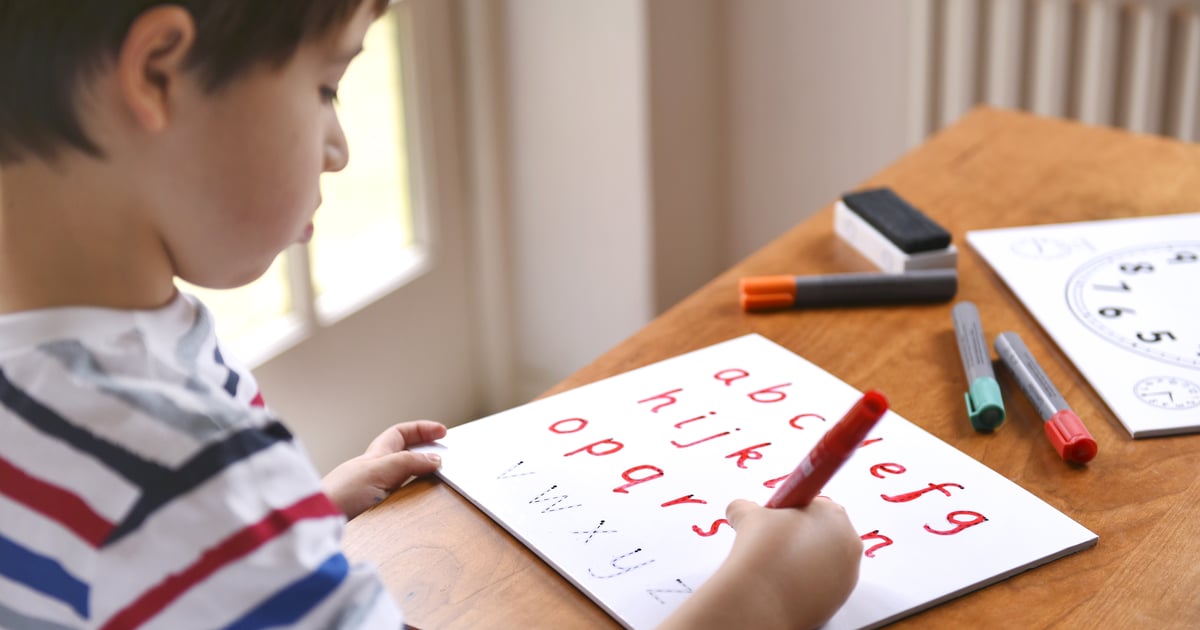 If we just force it, then the child gets tired quickly, starts to get distracted, writes worse and worse. And if you allow yourself to choose in what order to write off the words, what will change? Does he write less? Then let's let him set his own order!
If we just force it, then the child gets tired quickly, starts to get distracted, writes worse and worse. And if you allow yourself to choose in what order to write off the words, what will change? Does he write less? Then let's let him set his own order!
You can arrange a lesson-quest and invite the child to choose 5 or 10 words that he is ready to write neatly and beautifully.
You can also offer to do a nice half of the task and not finish the second part. You can offer to write off your favorite poem, anecdote or the lyrics of a song instead of a text from a textbook. Or you can make a homemade picture book. Or write down a story invented using story cubes. You can write a birthday guest list or a grocery shopping list. And you can share responsibility: a child comes up with one phrase, and an adult writes it down, and vice versa. The adult invents, the child writes. Let it be funny nonsense - inventing and writing funny things is much more interesting!
If we want children to write more on their own and understand written letters better, we can leave them notes written by hand more often
And at first it will be notes written in large capital letters, and then you can write some words in capital letters or even everything. If a child cannot read italics, then learning to write in cursive does not make sense. It will copy the text as a picture without dividing it into individual letters and words. And this will be mechanical copying, which will not help you learn how to write each of the letters separately.
Bonus: for adults
I recommend two exercises for adults to remember how they feel about writing: take a pencil or pen in an unaccustomed hand, and write a number and the words "homework". And then you can try to change the color of the pen after each letter. Please note that in adults the image of the letter is formed, you do not need to remember how to write "a" and in which direction the tail of "d", but still writing with an unusual hand is not very easy. When you write a text, you do not have such difficulties, you think, and the hand itself writes the necessary squiggles. But if you have to stop after each letter (you - in order to change the color, and the child - to remember how this or that letter is written), then there will be more errors, you can easily skip the letter too.